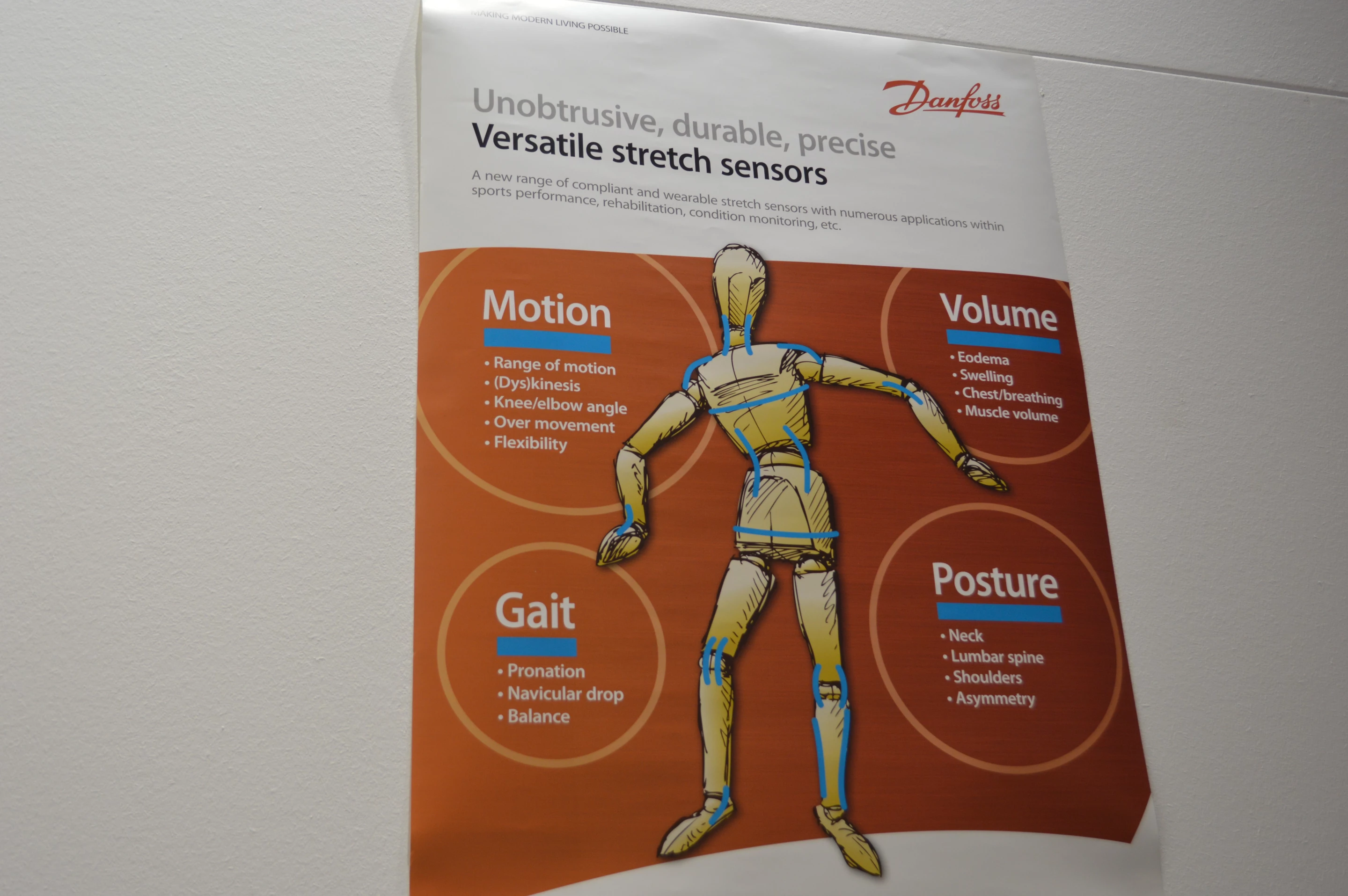Danish company Danfoss PolyPower A/S has designed a new wearable sports sensor that has the potential to measure everything from stance to force. The sensor could prove a veritable technology on its own, but PolyPower technology is also being explored as a means of actuation and energy harvesting.
PolyPower material is a proprietary version of Dielectric Electro Active Polymer (DEAP) technology. The film consists of a patented combination of silicone dielectric material with a corrugated surface and a very thin layer of metallic electrode on top of it. As with other types of DEAP, PolyPower material reacts when a voltage is applied. By applying a high voltage, electrostatic pressure causes the film to expand in plane and contract in thickness. The corrugation on the PolyPower material allows it to be stiff across the width or length while stretching the other way.
The electrostatic properties of the PolyPower material can be manipulated in several different ways for different applications. In the long term, Danfoss PolyPower sees potential in using the material for harvesting energy. The company explains that when a voltage is applied to a stretched piece of film, and the film is then relaxed, the voltage will increase significantly, converting mechanical energy into electricity.
"At present, Danfoss PolyPower A/S is working on an installation for demonstration in kW range with the aim that it can be used for offshore wave energy," strategic marketing manager Lone Ivang told us. "Potentially, the technology can be used for energy harvesting on machinery and for supplying sensors."
Danfoss PolyPower and a greater research group that includes seven Danish companies and three Danish universities have embarked on a four-year project funded in part by the Danish Advanced Technology Foundation. The parties hope to further develop and improve DEAP technology and explore its uses for actuation and energy harvesting.

In the meantime, PolyPower sports/body sensors are a practical application that has sprung from the greater research. They package DEAP film technology in a versatile platform that can make it possible to measure all kinds of body position, movement and internal activity. They could empower an entirely new generation of sports monitoring clothing and devices.
In the sensor application, the electrostatic process detailed above is reversed, and a stretch in the sensor (change in thickness and plane) results in a measurable change in capacitance. Using this property, the sensors can be applied toward measuring all kinds of physical data, including knee and elbow angle, range of motion, over-movement, shoulder alignment, breathing patterns and muscle volume. The elastic material's thin, low-profile form factor makes it easy to integrate into clothing, muscle wraps, protective gear and other sports wear.
Danfoss PolyPower launched its initial sensor samples late last year and recently updated them with a wireless version. The latest demo sensor uses Bluetooth low energy (BLE) to connect with a mobile device. The integrated chipset includes a Texas Instruments BLE chip and onboard sensors like a gyroscope, accelerometer and magnetometer. The finalized version will allow for several PolyPower sensors to connect wirelessly with a mobile device. The company is still tweaking the Bluetooth unit, so it was unable to provide specs, but did say that it needs to be wearable, so making it as small and light as possible is a priority.
At the recent ISPO Munich show, Danfoss PolyPower displayed a prototype golf training sleeve with an integrated PolyPower sensor. In this application, the wireless sensor system is used to measure the angle of the elbow and metrics of the swing. The PolyPower sensor stretches with the elbow, reading angle, and the sensors in the wireless chipset provide additional information about acceleration, force, etc. That data is sent wirelessly to an iOS device, which then provides feedback, letting the golfer know how to improve the swing.
Danfoss PolyPower is currently finalizing the build of the wireless sensor and plans to release evaluation samples to businesses that wish to research their application for potential products. It hopes that the evaluations will lead to a commercial sensor application.
The first video below cuts straight through the scientific chatter and shows how the golf swing-measuring prototype works. The second is a bit more technical, but it provides a closer looker at energy generation potential of PolyPower material.
You can find more potential applications detailed on the Danfoss YouTube page.
Source: Danfoss PolyPower A/S









